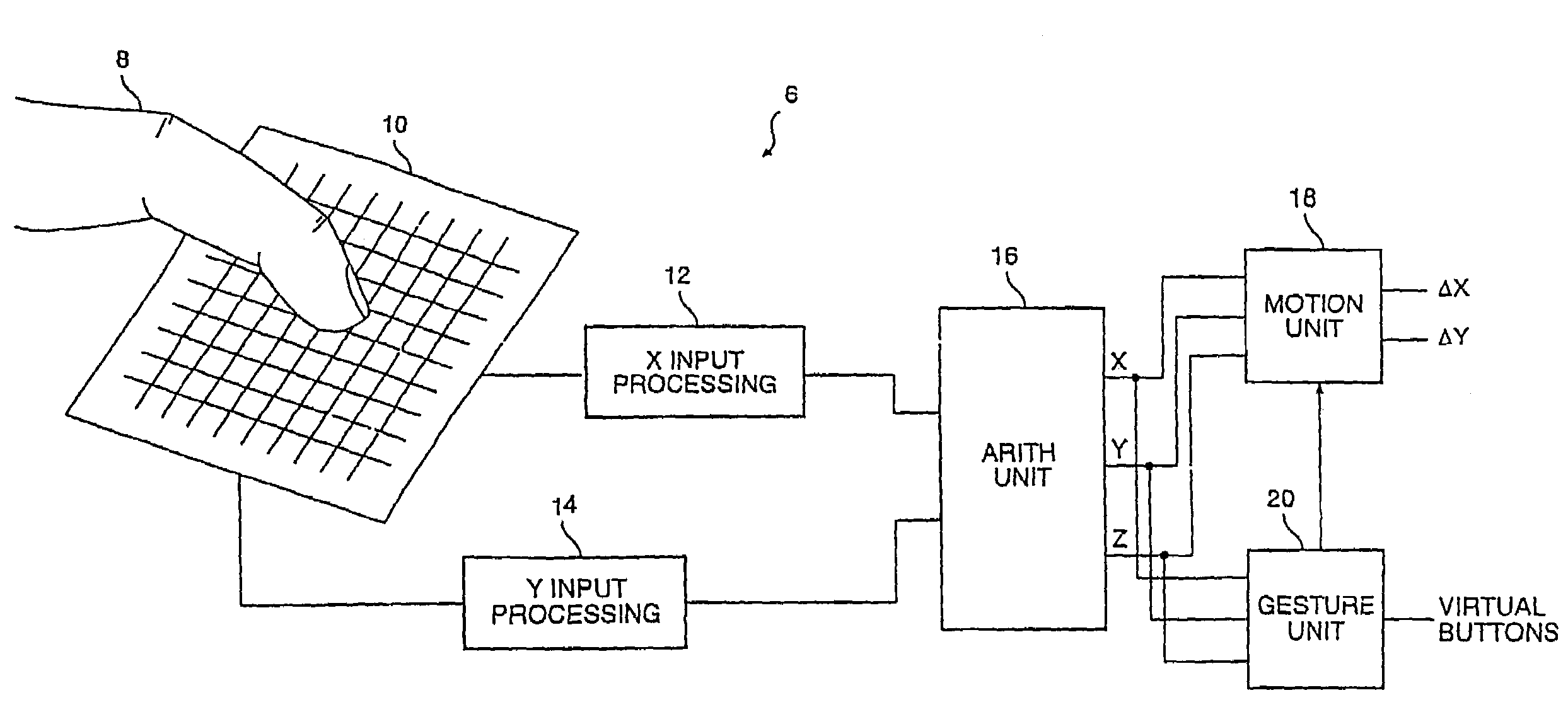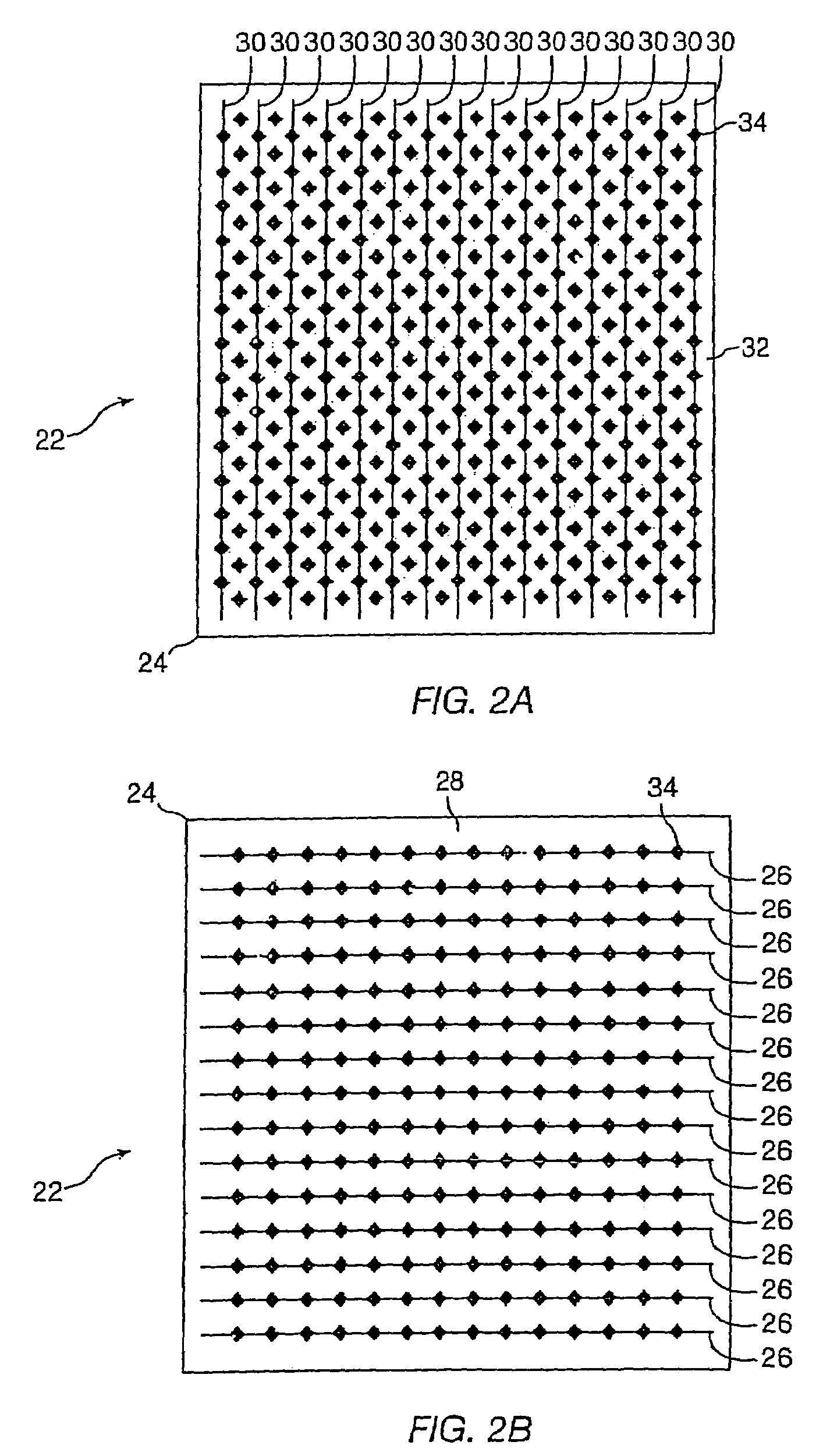Object position detector with edge motion feature and gesture recognition
a technology of gesture recognition and object position detection, which is applied in the field of object position sensing transducers and systems, can solve the problems of large size, high cost of trackball devices, and inability to detect objects with edge motion features,
- Summary
- Abstract
- Description
- Claims
- Application Information
AI Technical Summary
Benefits of technology
Problems solved by technology
Method used
Image
Examples
Embodiment Construction
[0079]This application is a continuation of co-pending U.S. patent application Ser. No. 10 / 810,879, filed Mar. 26, 2004, which is a continuation-in-part of U.S. patent application Ser. No. 10 / 351,208, filed Jan. 23, 2003, now issued as U.S. Pat. No. 6,750,852, which is a continuation of U.S. patent application Ser. No. 08 / 899,317, filed Aug. 12, 1997, now issued as U.S. Pat. No. 6,610,936, which is a continuation of U.S. patent application Ser. No. 08 / 623,483, filed Mar. 28, 1996, now issued as U.S. Pat. No. 5,880,411, which is a continuation-in-part of U.S. patent application Ser. No. 08 / 320,158, filed Oct. 7, 1994, now issued as U.S. Pat. No. 5,543,591, which is a continuation-in-part of U.S. patent application Ser. No. 08 / 300,387, filed Sep. 2, 1994, now issued as U.S. Pat. No. 5,914,465, which is a continuation-in-part of U.S. patent application Ser. No. 08 / 115,743, filed Aug. 31, 1993, now issued as U.S. Pat. No. 5,374,787, which is a continuation-in-part of U.S. patent applica...
PUM
 Login to View More
Login to View More Abstract
Description
Claims
Application Information
 Login to View More
Login to View More - R&D
- Intellectual Property
- Life Sciences
- Materials
- Tech Scout
- Unparalleled Data Quality
- Higher Quality Content
- 60% Fewer Hallucinations
Browse by: Latest US Patents, China's latest patents, Technical Efficacy Thesaurus, Application Domain, Technology Topic, Popular Technical Reports.
© 2025 PatSnap. All rights reserved.Legal|Privacy policy|Modern Slavery Act Transparency Statement|Sitemap|About US| Contact US: help@patsnap.com



